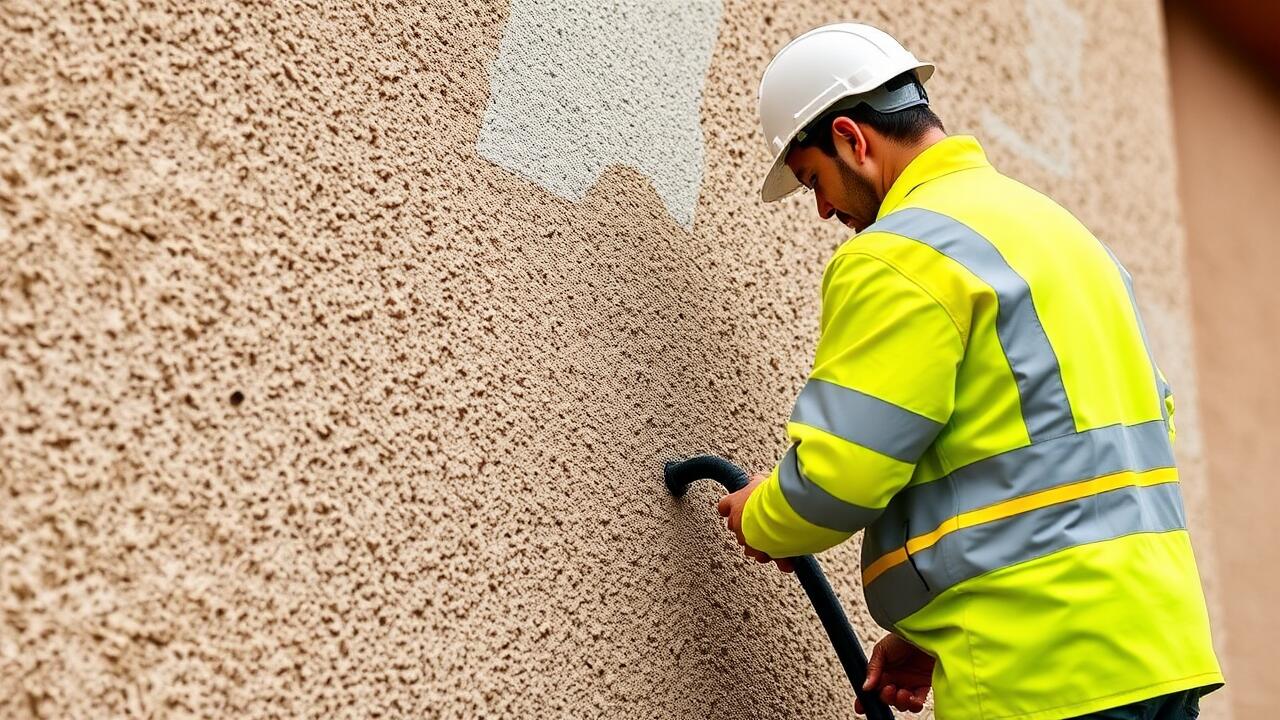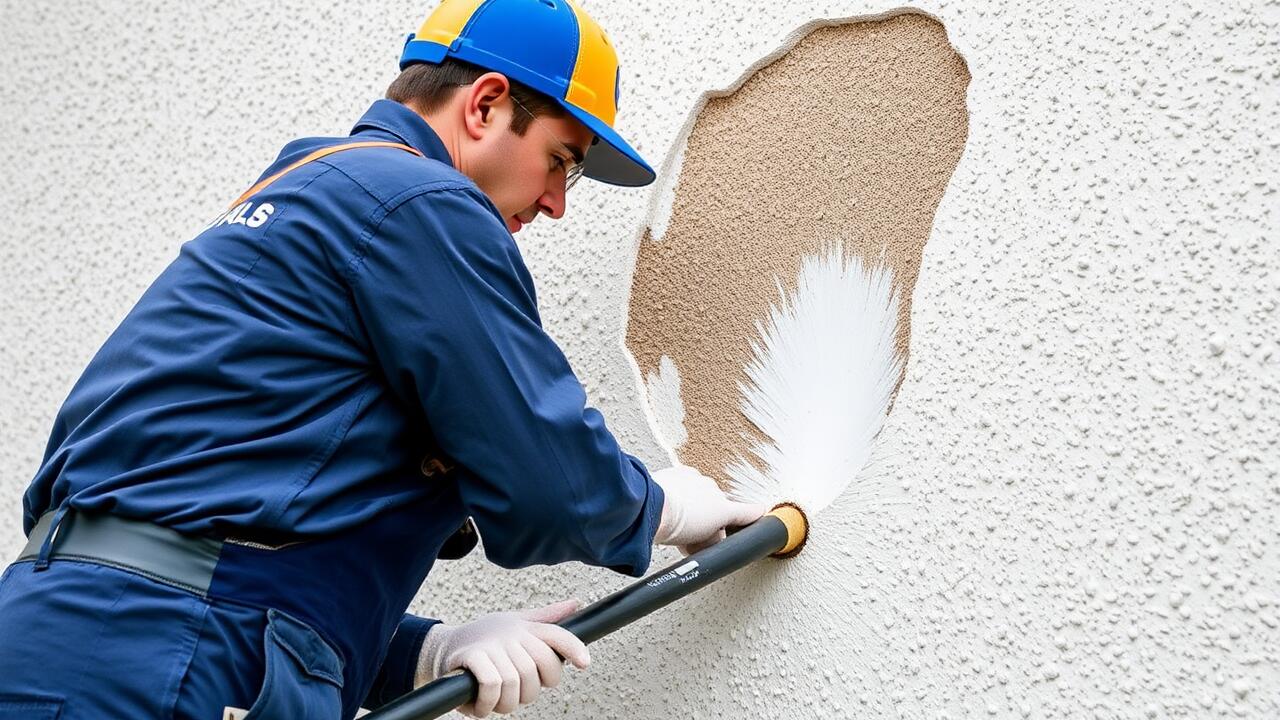
Dealing with Different Types of Stucco
Stucco is a popular building material characterized by its durability and texture. Different types of stucco exist, each posing unique challenges during removal. Traditional three-coat stucco is thicker and often more challenging to take off than newer systems, such as one-coat stucco. It is essential to identify the specific type before starting the removal process in order to anticipate the tools and techniques required.
Stucco removal in Downtown Los Angeles, Los Angeles, can present additional considerations due to the region’s climate and local building codes. Homes may feature variations like acrylic or synthetic stucco, which may require specific methods for removal to avoid damage to the underlying structure. Understanding these differences aids homeowners in choosing the right professionals or methods for the job, ensuring a smoother process.
Identifying Common Variations
When considering stucco removal, it's important to recognize the common variations that may exist in different buildings. Traditional stucco typically comprises a mixture of cement, sand, and lime, providing a robust outer layer. However, synthetic stucco, often referred to as Exterior Insulation and Finish System (EIFS), can present unique challenges due to its additional layers and materials. Identifying which type of stucco you are dealing with is essential in planning for removal, especially in areas like Downtown Los Angeles, where architectural styles may vary significantly.
Another variation homeowners may encounter is the age of the stucco. Older stucco may have different consistency and adhesion properties compared to newer applications. In locations such as Downtown Los Angeles, historical buildings might feature stucco that has been painted or coated multiple times, complicating the removal process. Understanding these variations helps in preparing for the level of labor and tools required, ensuring an efficient approach to stucco removal that minimizes damage to the underlying structures.
Potential Challenges
Removing stucco can present several challenges that homeowners should be aware of. One major issue is the potential for damage to the underlying surfaces. If the stucco is tightly adhered to the wall, excessive force may crack or warp the structure underneath, leading to costly repairs. Additionally, improper removal techniques can result in a time-consuming process, making the project more labor-intensive than initially anticipated.
Another challenge during stucco removal is the risk of exposing harmful materials, especially in older homes. Some stucco mixtures may contain asbestos, requiring special handling and disposal protocols. This concern makes it essential to conduct thorough inspections before beginning any work. Homeowners considering Stucco Removal in Brentwood, Los Angeles, need to prepare for these hurdles and plan accordingly to ensure a smooth process.
Issues You Might Encounter
Removing stucco can present several unforeseen challenges. One common issue is the potential for moisture damage hidden beneath the surface. If water has penetrated the exterior layer over time, it may have affected the underlying structures or caused mold growth. These conditions can complicate the removal process and require additional repair work, which can extend the timeline and increase costs.
Another challenge involves the tools and techniques needed for effective stucco removal. Depending on the type and thickness of the stucco, specialized equipment may be necessary to ensure an efficient job. Homeowners in areas like Brentwood, Los Angeles, might find that hiring professionals is often more practical. Proper expertise helps navigate the complexities that can arise from working on various substrates and ensures safe execution without damaging the underlying wall.
Post-Removal Cleanup
After the stucco has been removed, the cleanup process begins. It's essential to ensure that all debris is swept away from the work area. This includes not only large pieces of stucco but also dust and smaller fragments that can accumulate during the removal procedure. Proper safeguarding of surrounding areas should be prioritized to avoid damage to adjacent structures. Especially in busy locations, such as during a stucco removal in Downtown Los Angeles, Los Angeles, maintaining organization and cleanliness can help prevent accidents.
Disposing of the debris correctly is another critical aspect of post-removal cleanup. Local regulations may dictate how stucco waste must be handled, so consulting local guidelines is recommended. Consider renting a dumpster or using bags specifically designed for construction waste. This ensures that the material is disposed of responsibly. Thorough cleaning of tools and equipment using water or a power washer can prevent residue buildup, which is particularly important when working on projects in densely populated areas like Downtown Los Angeles.
Proper Disposal and Cleaning Techniques
Proper disposal of stucco debris is crucial to ensure compliance with local regulations and minimize environmental impact. Before starting the removal process, it's important to check with local waste management authorities in Los Angeles for any specific guidelines. In many cases, stucco removal must be taken to designated construction and demolition waste sites. It's advisable to keep the area organized during the removal to separate recyclables from regular trash effectively. This practice not only streamlines cleanup but also promotes recycling efforts.
Cleaning the work area post-removal can be labor-intensive, especially when dealing with dust and fragments. Using a vacuum equipped with a HEPA filter can help collect fine particles effectively. It’s best to wet down the area lightly before sweeping to prevent dust from becoming airborne. Afterward, pressure washing may be necessary to tackle stubborn residues. Homeowners seeking help with these tasks can consider professionals specializing in stucco removal in Downtown Los Angeles, Los Angeles, for a thorough and efficient cleanup.
FAQS
What are the different types of stucco that can be removed?
There are several types of stucco including traditional cement-based stucco, synthetic stucco (EIFS), and acrylic stucco. Each type may require different removal techniques and tools.
What challenges might I face when removing stucco?
Some common challenges include dealing with unexpected moisture damage, working with hard-to-remove layers, and the potential for structural issues underneath the stucco.
How can I identify the type of stucco on my home?
You can identify the type of stucco by examining its texture and composition. Traditional stucco is usually rough and grainy, while synthetic stucco may appear smoother and have a plastic-like feel.
What should I do for cleanup after removing stucco?
Proper cleanup includes disposing of debris according to local regulations, cleaning any surfaces affected by dust and debris, and inspecting for any additional repairs needed.
Is it necessary to hire a professional for stucco removal?
While some homeowners may choose to remove stucco themselves, hiring a professional is often advisable, especially if you encounter structural issues or if the stucco is difficult to remove.



